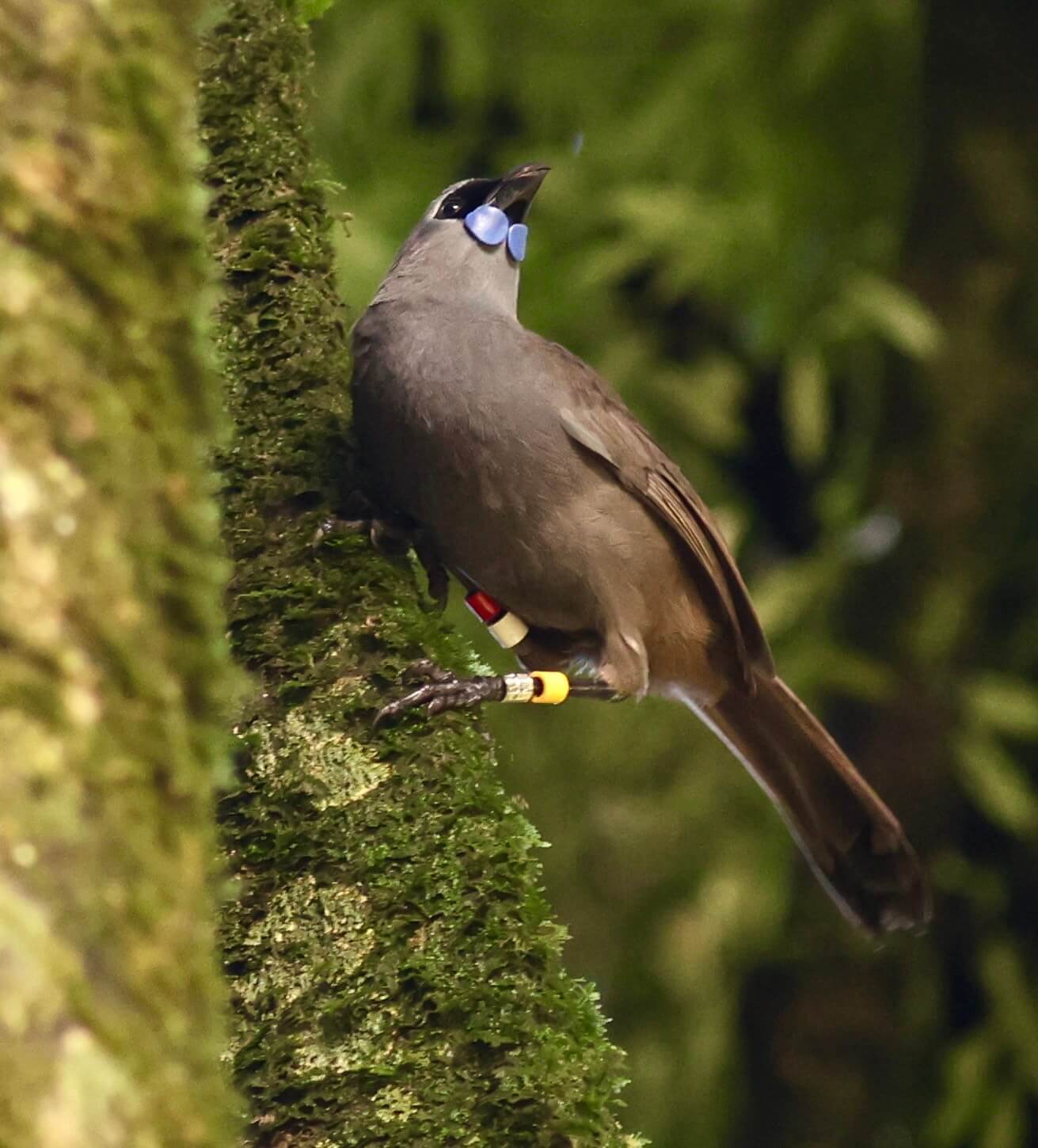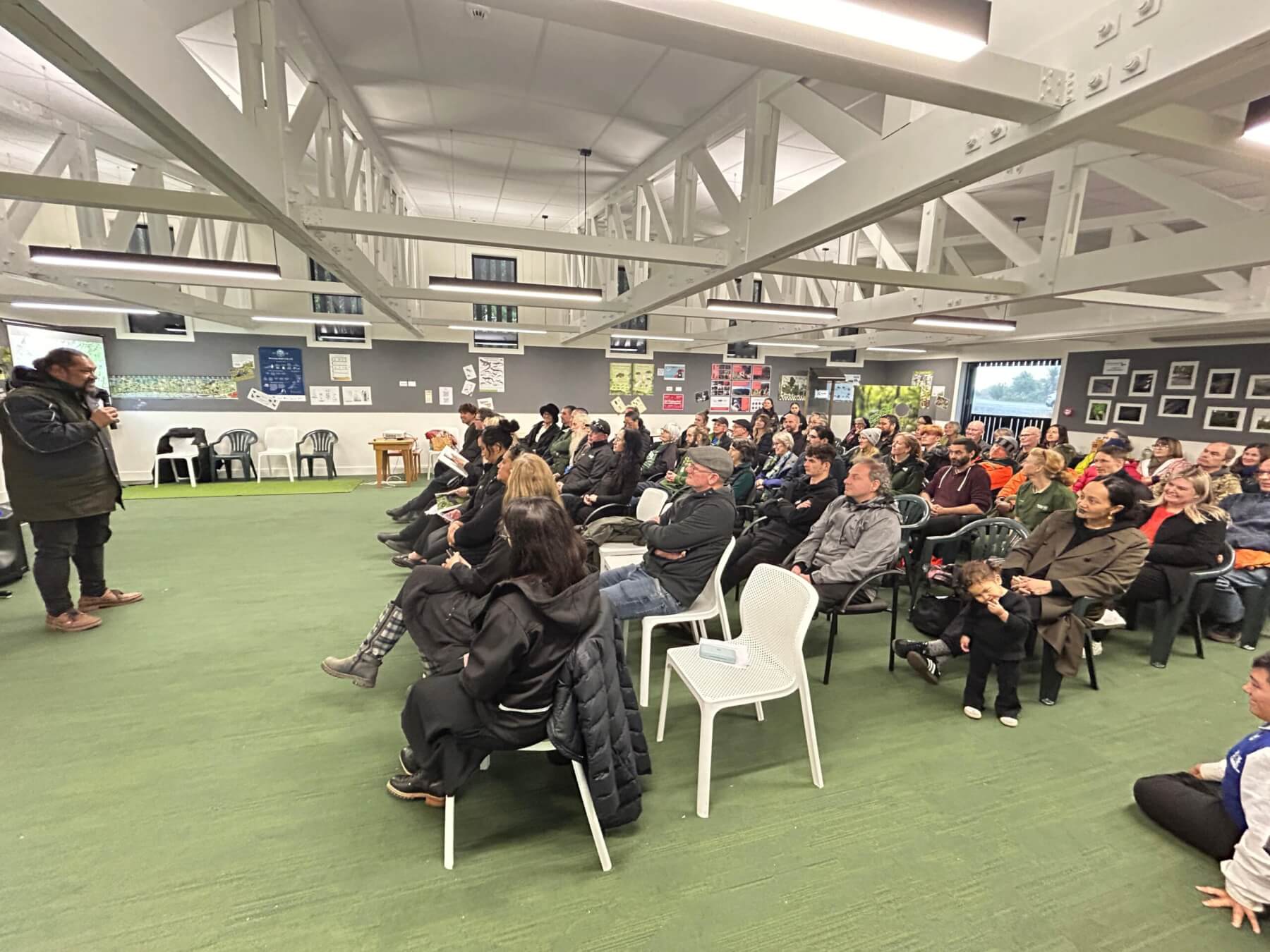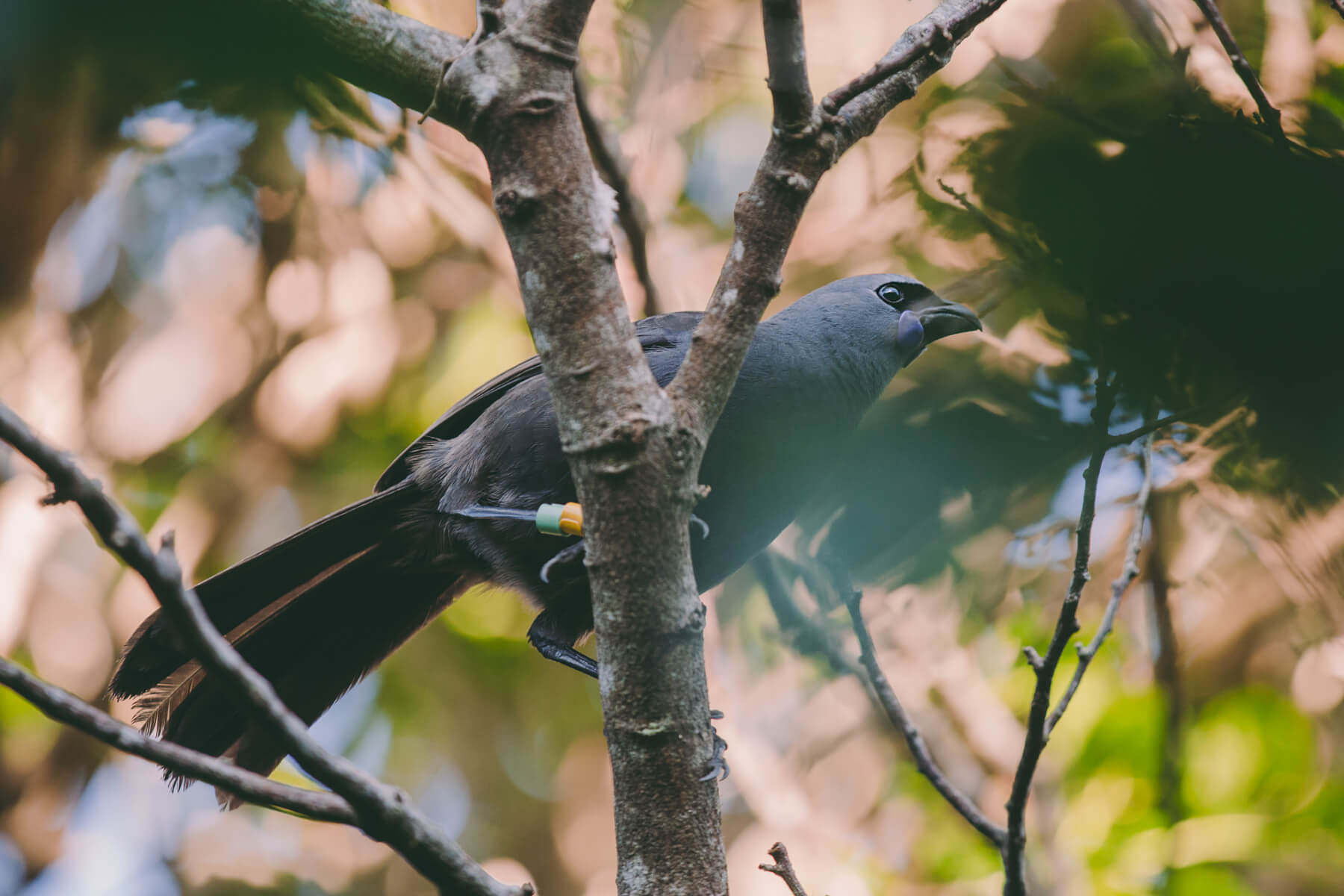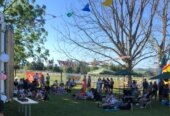
Female kōkako by Tania and Andrew Wilkinson
The official welcome for the first of up to 20 adult kōkako to be introduced to Sanctuary Mountain Maungatautari was held before they arrived last week.

Female kōkako. Photo: Tania and Andrew Wilkinson
Heavy rain delayed the flight of the kōkako, who are being brought south from the Hunua Range and began arriving this week.
Six were released on Monday.
Waipā mayor Susan O’Regan, speaking at the powhiri last week said it was a moment of deep significance — “not only for our environment, but for the relationships that underpin this kaupapa.”
Her council with Waikato Regional Council have been funding stalwarts of the project since day one.
O’Regan acknowledged mana whenua, the iwi of Hunua and Maungatautari, whose aroha for the taonga species made translocation possible.
Auckland council and the Hunua iwi Ngāti Paoa, Ngāti Tamaoho, Ngāi Tai ki Tāmaki, Ngāti Whanaunga and Ngāti Tamaterā restored kōkako populations one breeding pair in the Hunua Ranges in the 1990s to more than 250 pairs today.
“That is an extraordinary achievement,” O’Regan said.
“Your mahi, and the gift of these manu, is deeply respected. Here on Maungatautari, kōkako were first reintroduced in 2015 and 2016, generously gifted by Ngāti Rereahu from Pureora. Since then, the population has flourished — now the fastest-growing mainland population in Aotearoa.”
O’Regan described Maungatautari as a beacon of biodiversity success.
Since the fence was completed in 2006 and pests eradicated, 15 native species had been reintroduced. More than 560 kiwi were on the maunga helping to establish or boost populations across the North Island. Twenty-five takahē chicks have been raised there and the booms of kākāpō were heard here in summer for the first time on the North Island for a century.
“All of this is only possible through a truly unique model — a partnership between mana whenua, landowners, community, and conservationists. I want to acknowledge and thank the Maungatautari mana whenua — Ngāti Korokī Kahukura, Ngāti Hauā, Raukawa, and Waikato-Tainui — and the entire Sanctuary Mountain Maungatautari whānau, including staff, volunteers, supporters, and funders.”
Maungatautari is licensed to receive 20 kōkako.

Bodie Tihoi Huitoroa-Taylor, left, welcomes Maungatautari’s guests, excluding the kōkako left behind in Auckland due to bad weather. Photo: Supplied.
Moving the kōkako to different parts of the North Island has challenges.
The bird is known to develop its own regional dialects and females prefer males with a song they recognise from their area.
But the males are quick learners – a flock introduced into a Taranaki conservation estate in 2019 from Hauturu – Little Barrier Island – soon picked up the local dialect.
Meanwhile in 1978 protesters took to the trees in Pureora to prevent a native logging operation they said further endanger the last of the forest’s kōkako.
They gained national attention, and five years later logging was stopped for good.
Today, aided by pest control, the Pureora forest population is estimated at 670 breeding pairs. It is the largest since a recovery programme began in 1990 and the Department of Conservation talks of numbers being restored to levels present more than 60 years ago.Kōkako are also flourishing elsewhere – and this week has seen the arrival of the first of 20 birds to Sanctuary Mountain Maungatautari from the Hunua Range where a recovery programme was launched in the 1990s.
It is believed the total population of kōkako may have fallen to as low as 300 pairs before the turn of the century – today it’s closer to 2000.
In 1994 the only remaining breeding female in the Hunua Range fledged three chicks. The population was subsequently bolstered with additions from Mapara, Pureora, and Tiritiri Matangi and by 2015 there was 55 pairs.
Today Doc lists the kokako as “ nationally increasing” and reports a national population of 2300 pairs.
South of Te Kūiti on State Highway 4 the 1400ha Mapara Wildlife Management Reserve is also a safe haven for the wattle bird.
Other populations are being managed in Taranaki, Northland, East Coast and Bay of Plenty and off shore islands.

Coming our way – Twenty kōkako will be brought into Maungatautari from the Hunua Ranges. Photo: Amanda Rogers








